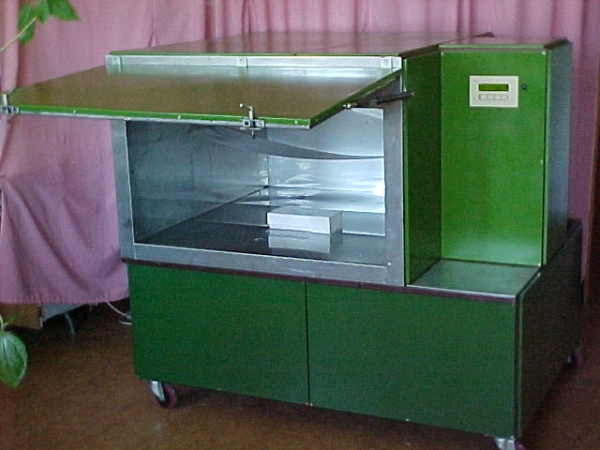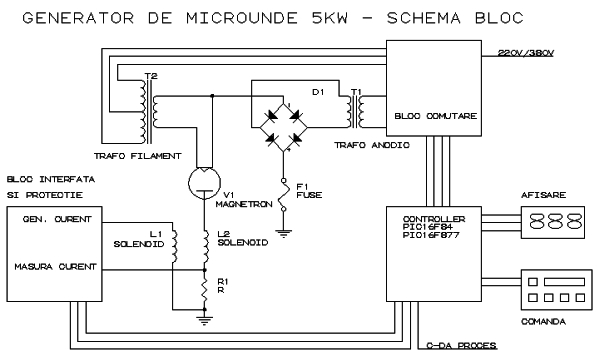1. Introduction
Microwaves are maybe, one of the greatest discovers of the 20’th century. With a vavelenght between 30 cm and 3 mm and a power between 1 mW and 500 KW are practically used in all fields from medicine to industry. Microwave thermal and chemical tratments are well known for the high efficiency, with 3 to 1000 times greatest then conventional process because of direct energy transfer into materials and selectivity compounds heating following dielectric permittivity parameters of the materials involved in reaction or in the treatment (equation 1):
where: – e’ is the real part of the permittivity, which characterize the amount of microwave reactive power changed with material (without absorption);
– e’’eff is the imaginary part of the permittivity, which characterize the microwave global absorption’s in the material.

Any microwave oven is a multimodal microwave cavity in which the incident power ( usual 700W to 70KW at 2.45 GHz ) has a particular distribution . If the probe to be treated has a great volume ( like drying foods in foodstuff industry or ceramic materials microwave drier ), this multimodal cavity is suitable for a treatment because many parts of the local power distribution are intersecting the probe volume. The user must have a total control for the microwave radiation like: modifying continuously the output power in a large range ( not only the output energy used in almost all home-appliance ovens ) and controlling precisely the treatment period.
We present here, briefly, our design concerning a 5KW magnetron oven with an effective volume of 1 cubic meter, based on continuous wave CK 101 magnetron and driven by a flash microcontroller PIC16F877.
2.The concept
In fig.1 is shown the typical structure for our high power microwave oven:
Fig.1 Typical high power structure of a microwave oven –
The magnetron ( microwave power generator ) is supplied through an anodic transformer ( T1-6KV/1A ) and a two steps filament transformer ( T2-7.5V/42A and 5.5V/36A ). The magnetic field of the magnetron is produced in two coils ( L1 supplied from a PWM based constant current source, with max.10A and 20V voltage swing and L2 supplied by a feedback anodic current ).

3. The firmware
The firmware is a software translated into a hex code by a compiler [3] or an assembler and stored in microcontroller’s [1] memory by a programming sequence, assisted by the PC and by a hardware programmer [5] board. A bootloader [2] will allow fast low voltage programming as many time as the firmware development is requiring. For our oven, there are 14 different LCD screens,
For mre detail: MICROCONTROLLER BASED INTERFACE UNIT FOR 5KW MICROWAVE OVEN

